Boeing 777 or the plane that flies the furthest
(average: 5,00
out of 5)
It is the world's largest twin-engine jet passenger aircraft. The Boeing 777 has set an absolute distance record for passenger aircraft - 21,601 thousand km! Boeing 777 ("Triple Seven" or "three sevens") - this aircraft was developed in the early 1990s, made its first flight in 1994, and has been in operation since 1995. The Boeing 777 was the first commercial airliner to be 100% computer-generated. And this is the safest long-haul airliner in the history of aviation!
I flew three sevens only once - from Dubai to Male with the Emirates airline, and then I was surprised to learn that they saved a lot on the layout of the economy class cabin, we will put one additional seat in the row, reducing the width of the rest! In this report, I will talk about the history of creation, design features and show the passenger compartment of the largest operator of this type of aircraft in Russia.

History of creation
In the mid 1970s. Three-engined 777, which was conceived as a competitor for the McDonnell Douglas DC-10 and Lockheed L-1011. This aircraft was conceived as a modified version of the 767 with a redesigned wing and tail section. It was planned to create two main options: a short-haul aircraft that would be able to carry up to 175 passengers over a distance of 5,000 kilometers, and an intercontinental liner carrying the same number of passengers over a distance of up to 8,000 kilometers.
Work on twin-engined aircraft soon began, but the 777 project was shelved due to difficulties with the design of the tail of the aircraft, and the company also decided to focus on the more commercially promising 757 and 767. As a result, when both cars began to roll off the assembly line, it became clear that a link was missing in the Boeing line of aircraft. There was an urgent need to have an aircraft that would be in a niche between such machines as the Boeing 767-300ER and Boeing 747-400.
1. Initially, Boeing planned to simply modify the 767, resulting in the concept of the so-called 767-X. It was in many ways akin to the 767, but had a longer fuselage, larger wing, and could carry about 340 passengers for distances of up to 13,500 kilometers.
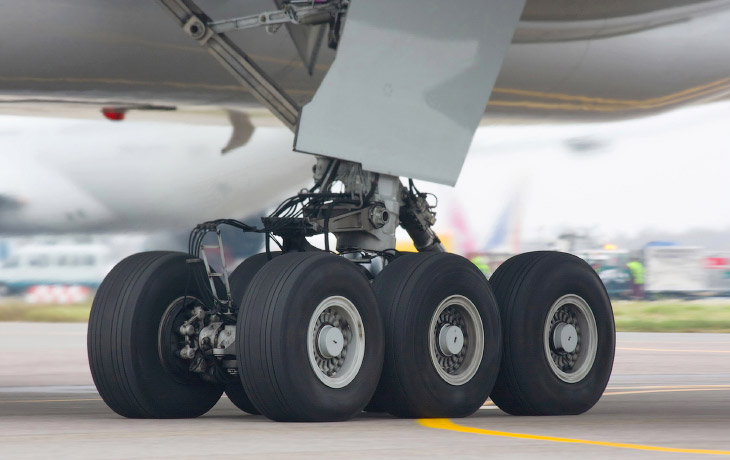
2. But the airlines were not impressed with the new aircraft. They wanted to have an aircraft capable of flying shorter distances and with a cabin configuration similar to the Boeing 747, which, in addition, could be changed by adding or removing the required number of passengers in the cabin of one class or another. Another necessary condition was the reduction in operating costs - they would have to be significantly lower than those of the 767. As a result, the initial design was heavily revised and the twin-engine Boeing 777 was born.
Boeing 777 became the first commercial airliner 100% developed on computers. During the entire development period, not a single paper drawing was released, everything was made using a three-dimensional design system.
The development of the aircraft began in 1990 and immediately received the first order from United Airlines. In 1995, the first 777 began operating commercial flights. To date, the 777-200LR is the aircraft capable of making the longest passenger flights in the world.
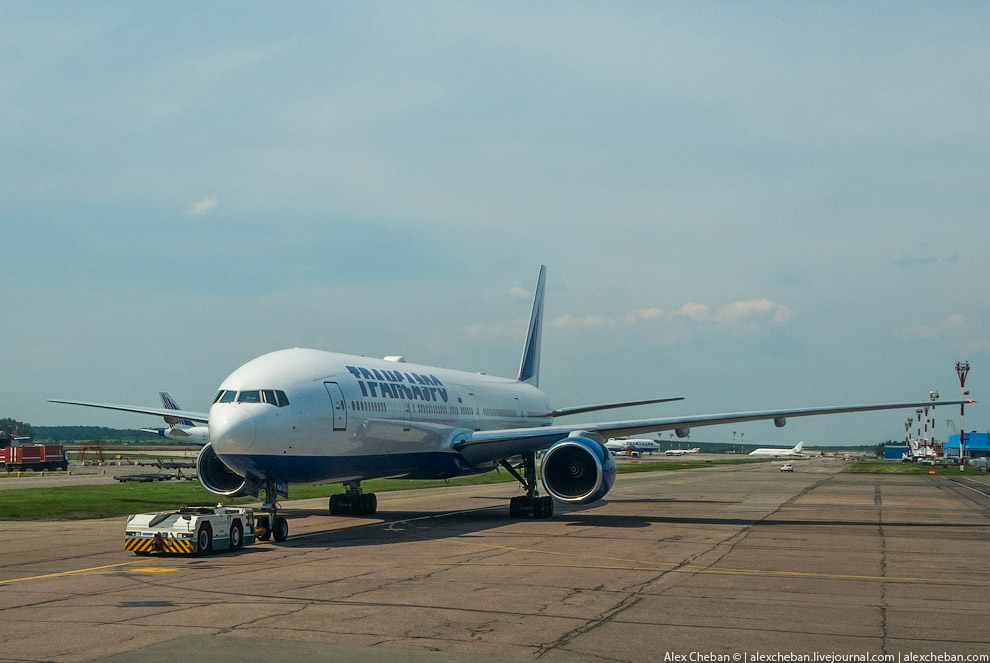
Modifications
3. 777-200 was the first modification of the aircraft and was intended for Segment A. The first 777-200 was transferred to United Airlines on May 15, 1995. With a range of 5235 nautical miles, the 777-200 modification was focused primarily on US domestic carriers. A total of 88 different aircraft of the 777-200 modification were handed over to ten customers. Airbus' competitor is the A330-300.
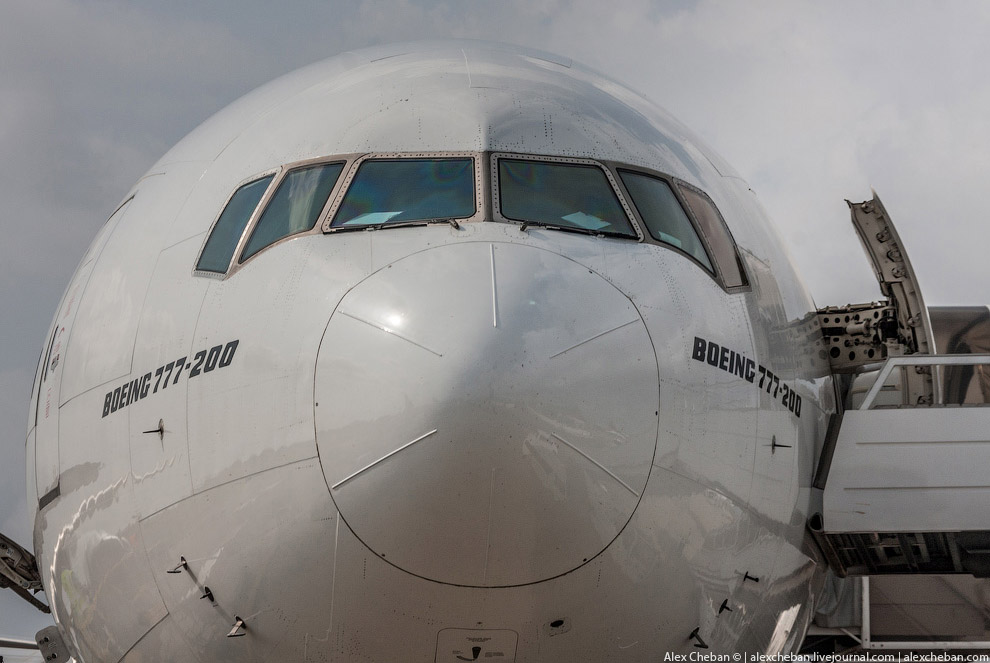
4. 777-300. An extended version of the 777-300 was intended to replace the Boeing 747-100 and Boeing 747-200 aircraft. Compared to older versions of the 747, the extended version has similar passenger capacity and range, but consumes a third less fuel and has 40% lower operating costs. The fuselage of the 777-300 is 11 meters longer than the base 777-200, allowing up to 550 passengers to be accommodated in a single-class configuration. The maximum modification range is 6015 nautical miles, which allows the 777-300 to serve the heavily loaded destinations previously served by the 747.
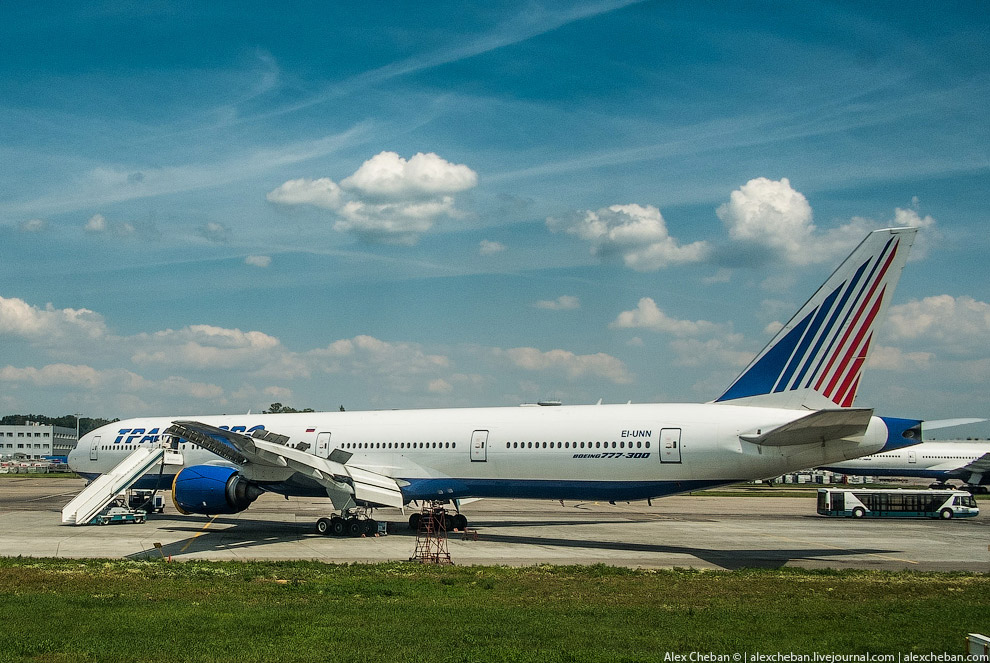

5. 777-200LR("LR" stands for "Longer Range" - long range), the model for Segment C, in 2006 became the most "long-range" commercial airliner in the world. Boeing called this model Worldliner, indicating the ability of an airliner to connect almost any two airports. The modification set a world record for the longest non-stop flight among commercial airliners - the flight range is 9,380 nautical miles (17,370 km). Modification 777-200LR is designed for extra long flights, such as Los Angeles - Singapore or Dallas - Tokyo. The 777-200LR has an increased maximum takeoff weight and three additional fuel tanks in the rear luggage compartment.
777-300ER("ER" stands for Extended Range, increased range) is a modification of the 777-300. The modification has bevelled and elongated wingtips, new main landing gear, reinforced front strut and additional fuel tanks. Standard on this model, the GE90-115B turbofan engines are by far the most powerful jet engines in the world, with a maximum thrust of 513 kN. The maximum range is 7,930 nautical miles (14,690 km), made possible by increased maximum takeoff weight and fuel capacity. The range of the 777-300ER fully loaded is increased by approximately 34% compared to the 777-300. After flight tests, the introduction of new engines, wings and an increase in takeoff weight, fuel consumption decreased by 1.4%.
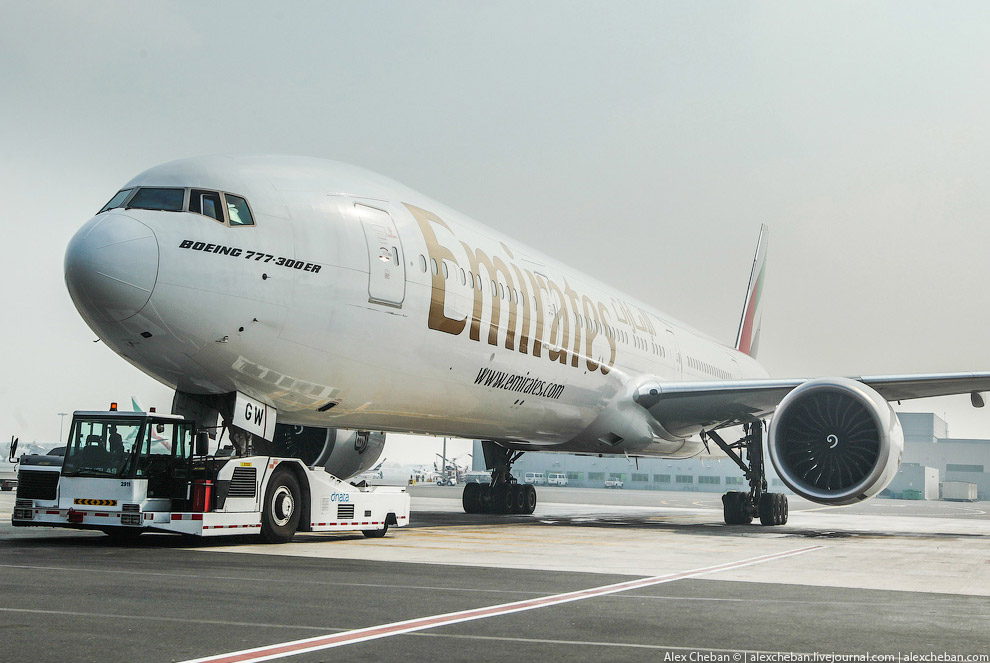
6. And all the modifications in the visual range:
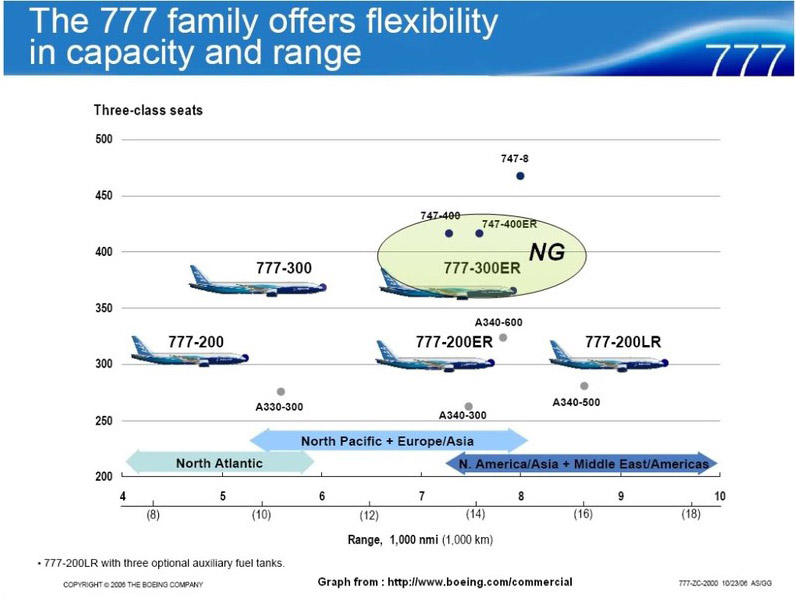

7. A good illustration for comparing scales is ahead of the 737th. Please note that the diameter of the GE-115B engine installed on the 777 is only 30 cm smaller than the width of the Boeing 737 cabin!
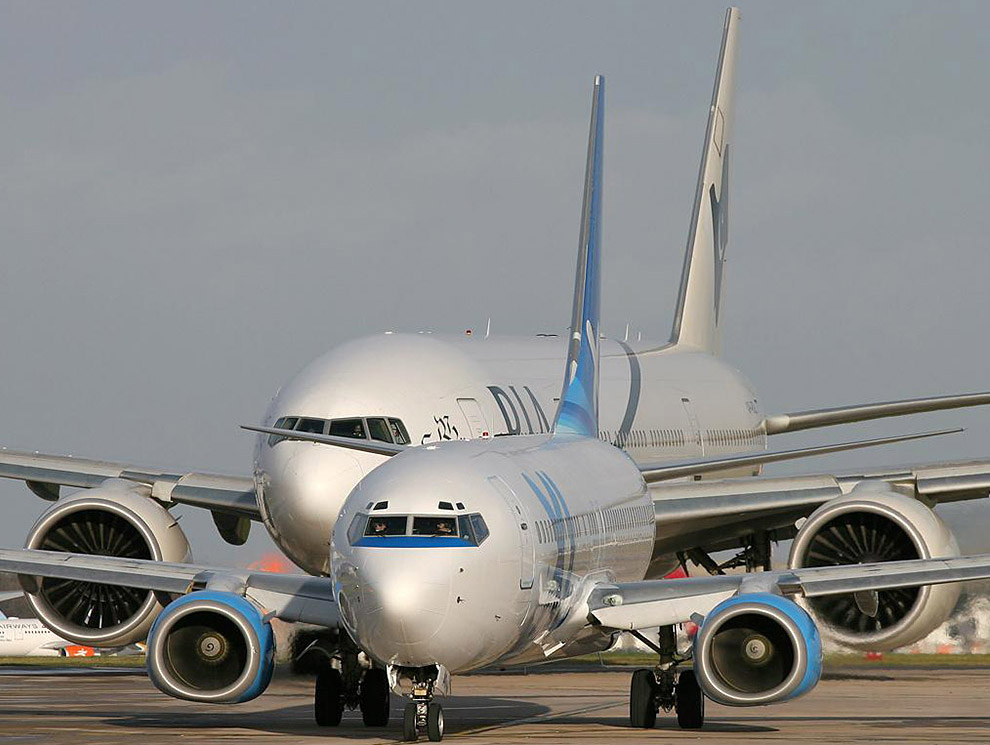
Structural elements
8. The design of the airframe includes the use of composite materials, which make up 9% of the weight of the structure. From such materials are made, including the floor of the cabin and the steering wheels. The main part of the fuselage has a circular section and at the rear passes into a blade-like tail cone, in which the auxiliary power unit is located.

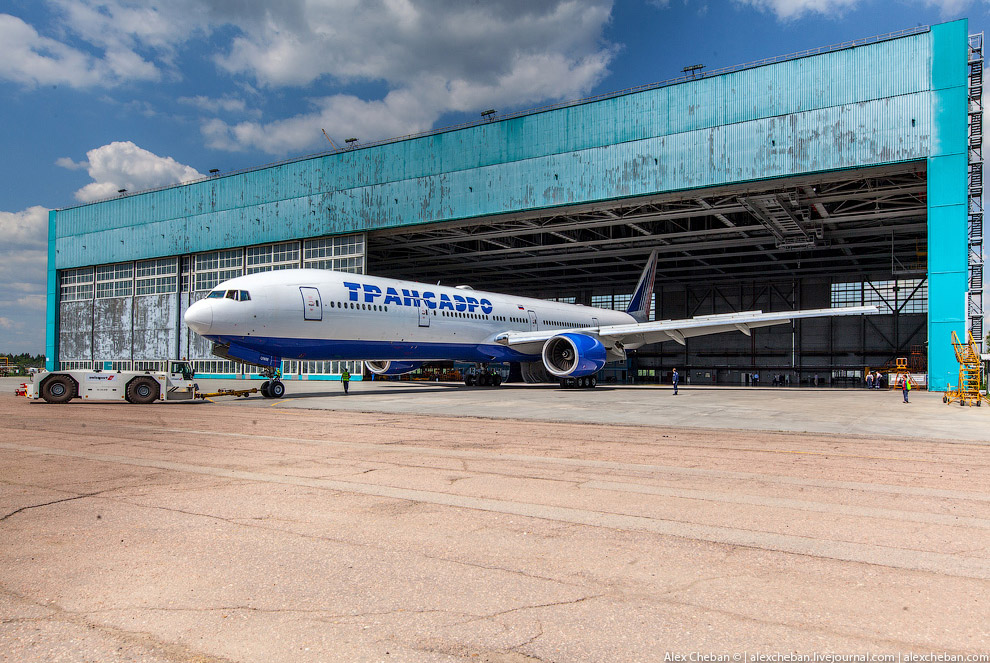
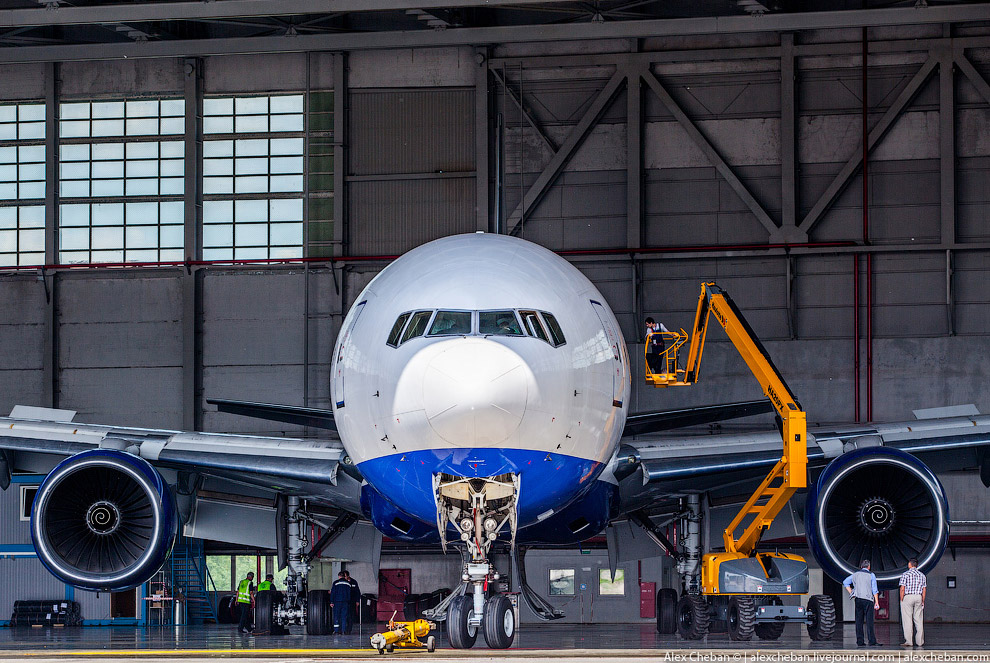
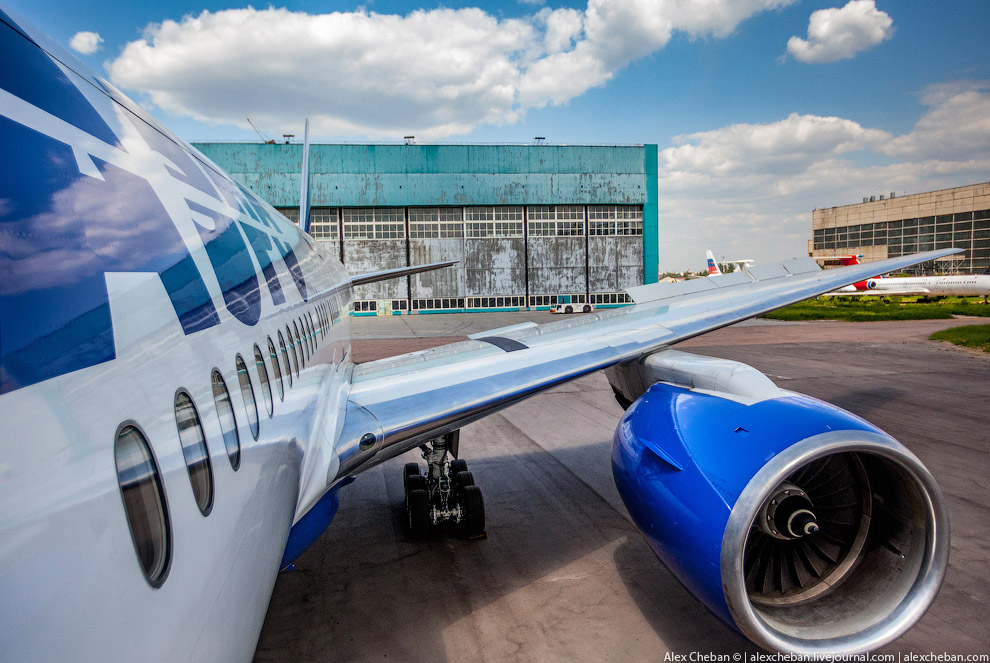
12. The airliner also has the largest landing gear and largest tires ever used in a commercial jet airliner. Each tire on the 777-300ER's six-wheel main landing gear can carry a load of 27 tons, more than the tire load of a Boeing 747-400!
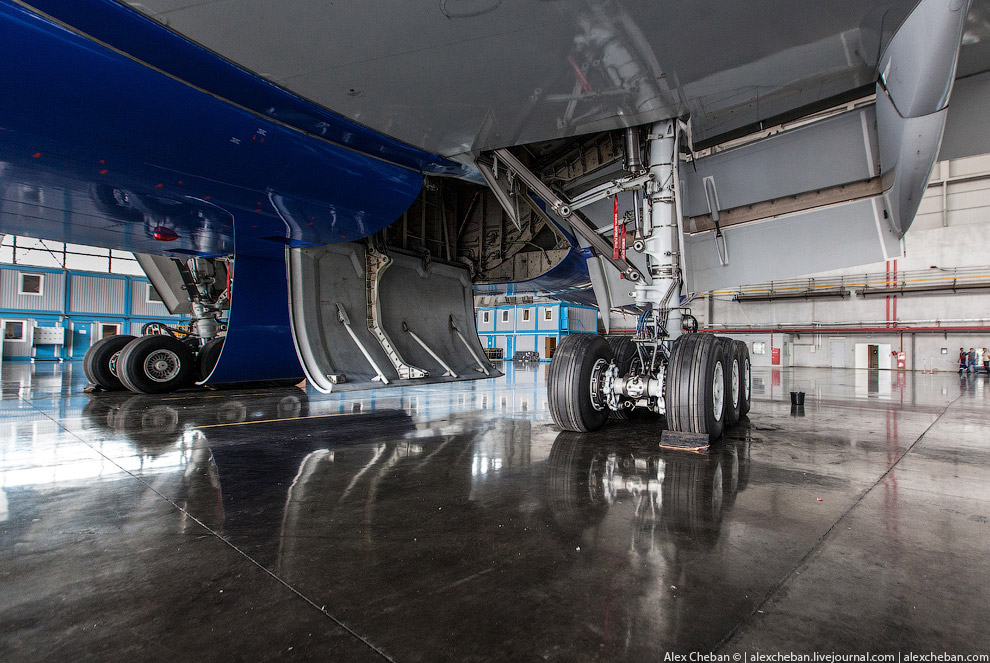
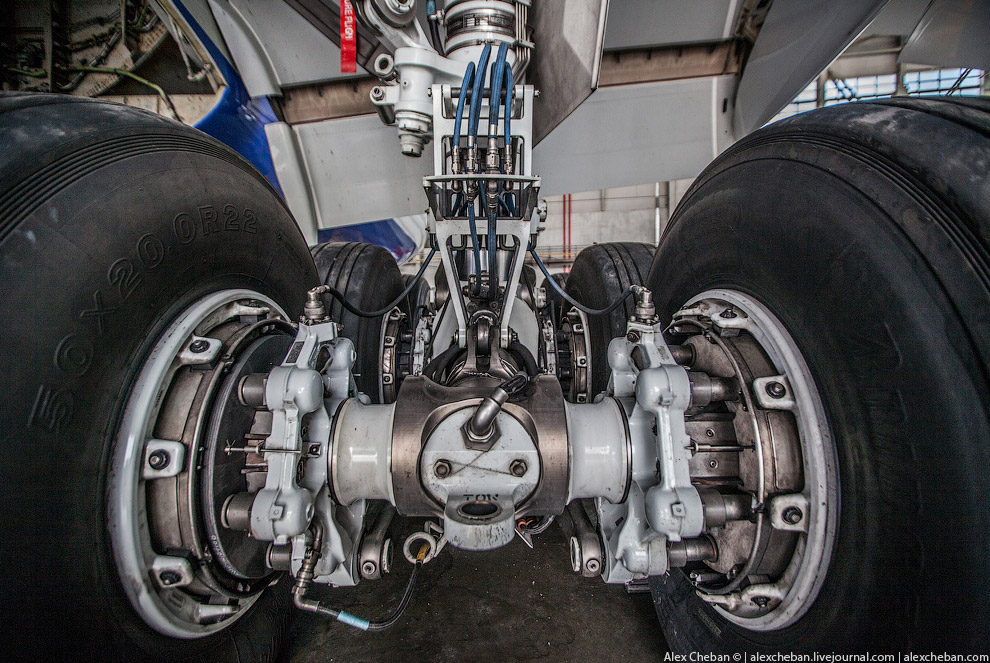
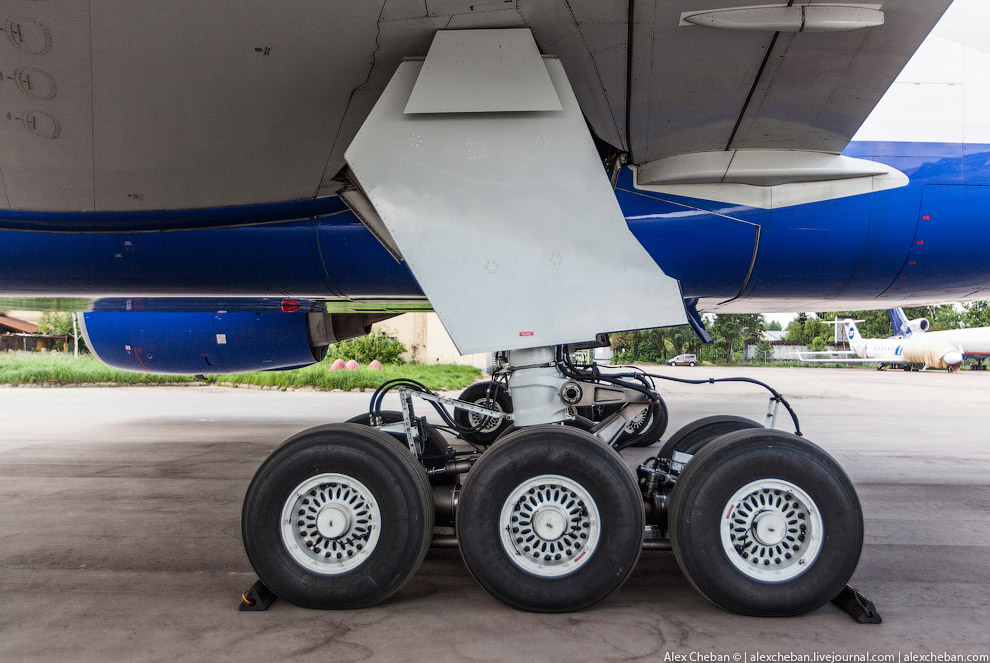
15. The aircraft has three redundant hydraulic systems, of which only one is needed for landing. An emergency aircraft turbine is located in the wing fairing under the fuselage - a small propeller that extends from the aircraft in emergency situations to ensure minimal power supply.
The General Electric GE90 engines on the Boeing 777 are the largest and most powerful jet engines in aviation history. And all five Boeing 777-300s of Transaero Airlines are equipped with Rolls Royse RR211 Trent 892 engines:
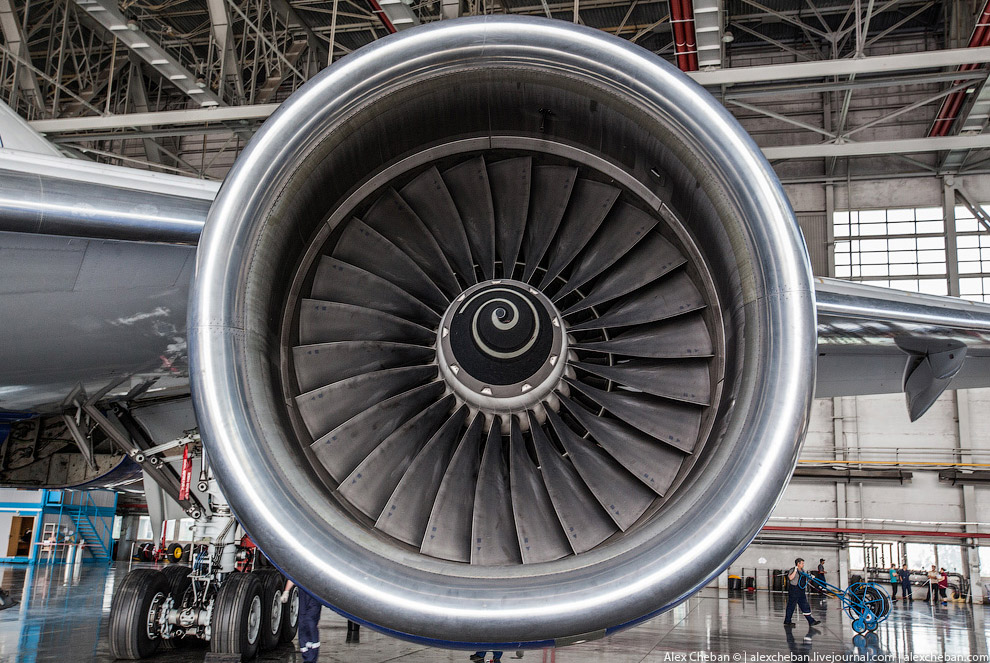
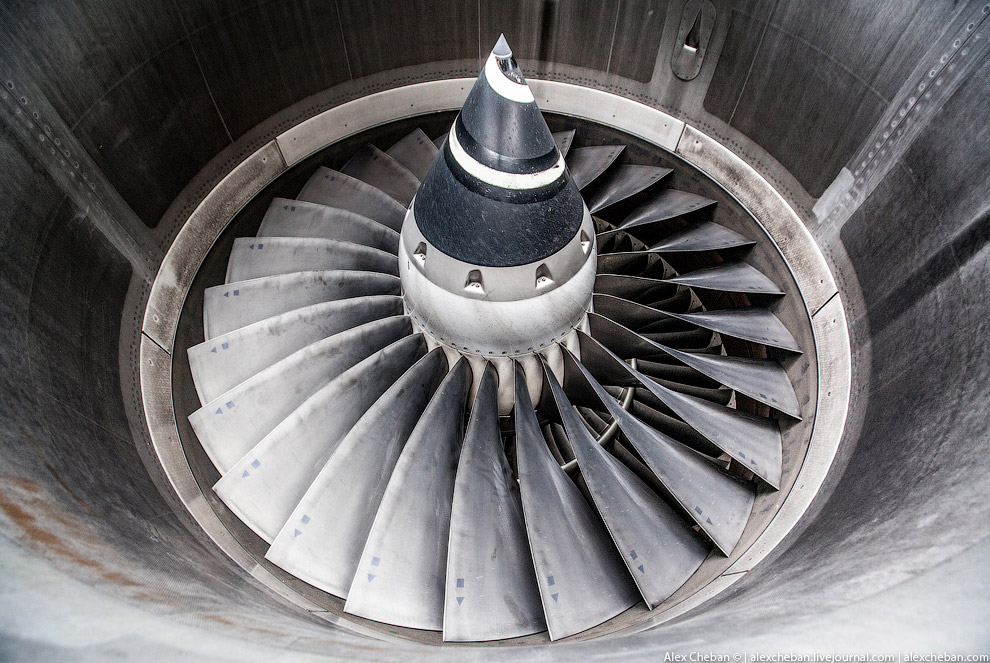
cockpit
17. The cockpit is very spacious. Boeing 777 in all modifications is a long-haul airliner capable of serving non-stop commercial flights up to 18 hours. However, the rules of various aviation regulators, professional and trade union organizations limit the continuous work of the crew and cabin crew.
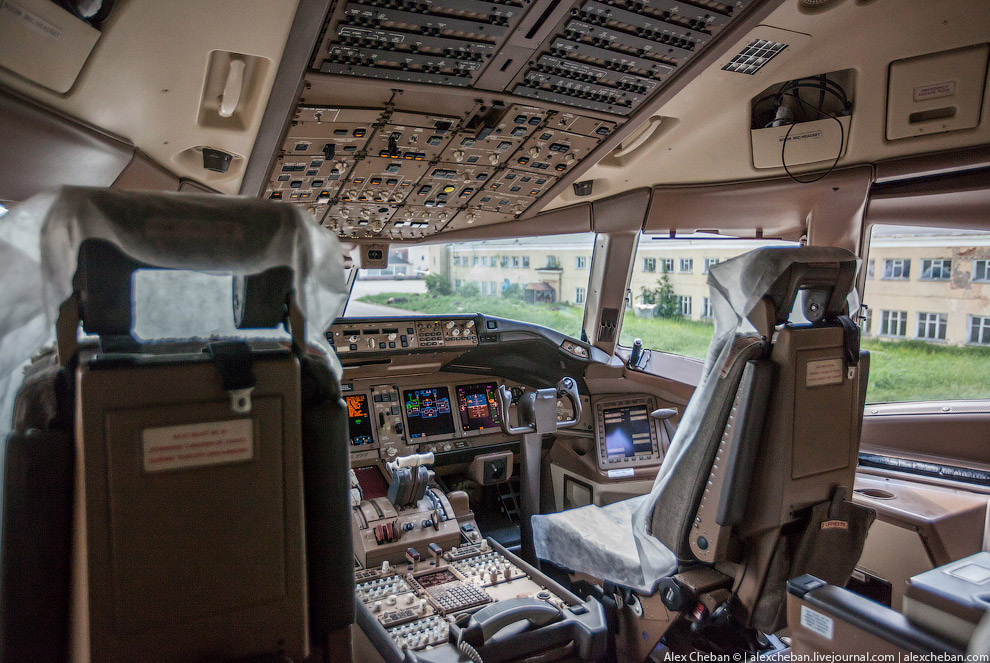

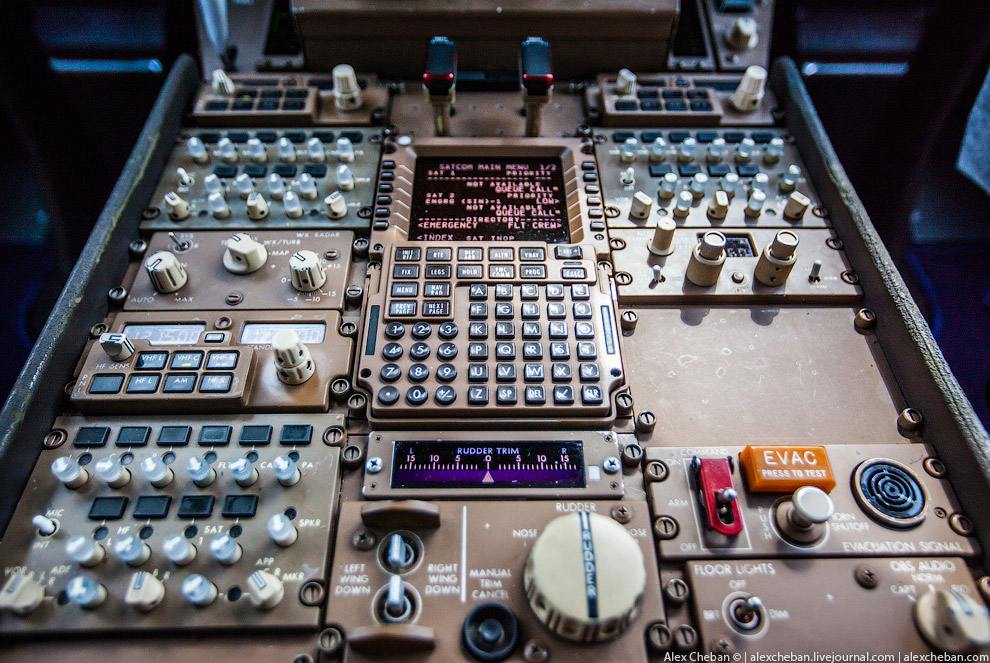
Interior
The interior of the 777, also known as the Boeing Signature Interior, features curved lines, oversized luggage racks and indirect lighting. Seat configuration ranges from 4 in a row in first class to 10 in economy class. The size of the windows - 380 × 250 mm - was the largest of all commercial airliners before the introduction of the 787.
The passenger cabin of each airline has its own layout. It depends on certain requirements of the customer, and not on the type of aircraft!
Please note that in the economy class, Transaero has one seat less in a row than, for example, Emirates (!) and Aeroflot.
20. Examples of the layout of the Boeing 777 -200 and -300 a / k Transaero. Economy 2-5-2:
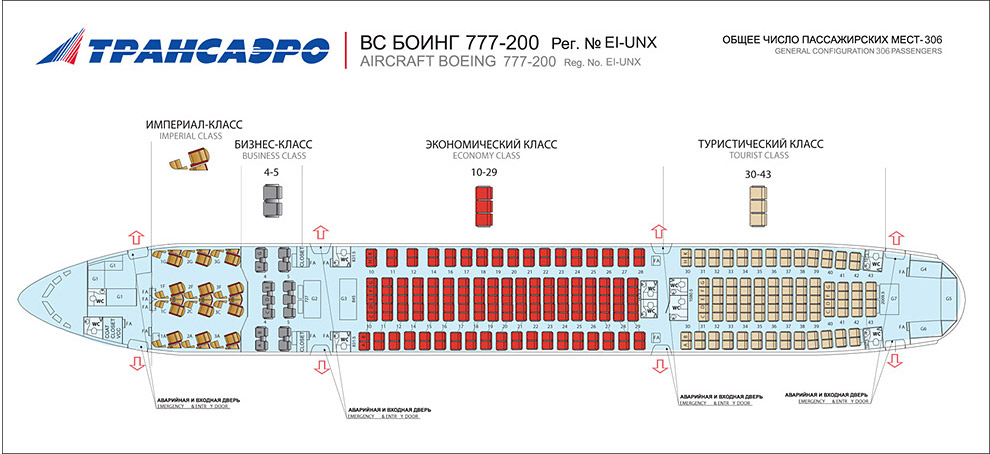
21. Economy 3-3-3:
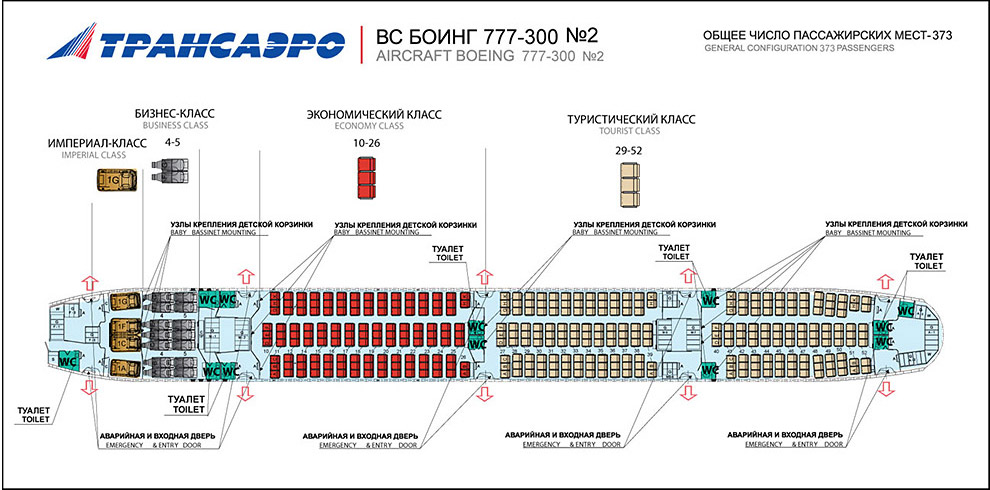
22. Aeroflot - economy: 3-4-3:
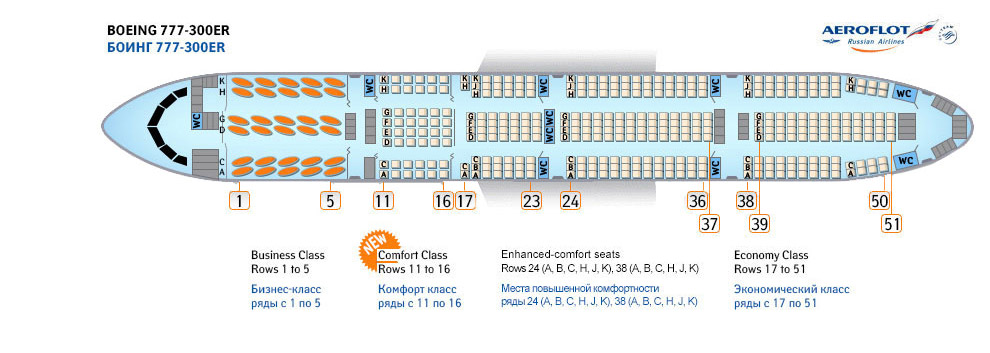
23. Let's take a look at the Boeing-777-300 of Transaero Airlines. Previously, this EI-UNM aircraft was operated by Singapore Airlines. The salon is completely updated, the Lumexis entertainment system is installed everywhere. The upholstery uses wear-resistant Alcantara material, and the seat manufacturer is the Italian company Aviointeriors.
